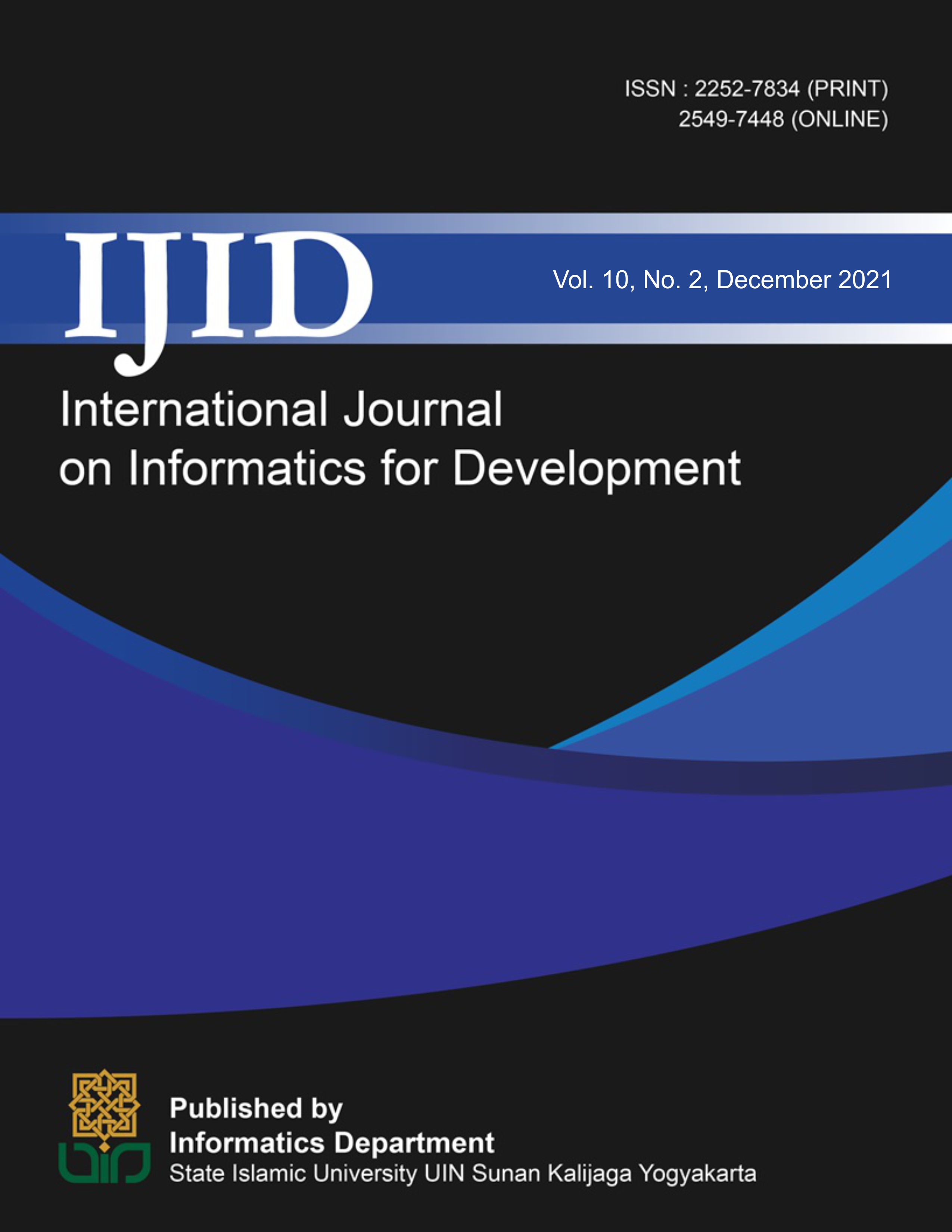Abstract
The visibility of a university’s website on the search engine becomes an essential factor to reach a wider audience. One way to improve the visibility of a website is through Search Engine Optimization (SEO). University’s website development with SEO is inseparable from the data model because SEO supporting factors are parts of the consideration in the components and structure of the data model. This study aims to build a data model for a university website accompanied by SEO. The relational data model is used in this study based on the performance and maturity in defining schema-based design. This study was conducted through four sequential stages: literature review, planning, implementation, and evaluation. The resulting relational data model is one that has accommodated four supporting factors for SEO, namely Meta description, Meta keywords, URL structure, and image description. This study has succeeded in building a relational data model at the abstraction level of conceptual and logical. In the conceptual data model, one entity and 11 attributes are formed. The logical data model was implemented in independent work environments using RelaX and operational requirements can be fulfilled by representing each table or relationship in the schema using relational algebra.
References
M. Torres-Samuel, C. Vásquez, A. Viloria, N. Varela, L. Hernández-Fernandez, and R. Portillo-Medina, “Analysis of Patterns in the University World Rankings Webometrics, Shanghai, QS and SIR-SCimago: Case Latin America,” 2018, pp. 188–199. doi: 10.1007/978-3-319-93803-5_18.
A. Setiawan, Z. Harahap, D. Syamsuar, and Y. Kunang, “The Optimization of Website Visibility and Traffic by Implementing Search Engine Optimization (SEO) in Palembang Polytechnic of Tourism,” CommIT (Communication and Information Technology) Journal, vol. 14, p. 31, Nov. 2020, doi: 10.21512/commit.v14i1.5953.
P. Foroudi, Q. Yu, S. Gupta, and M. Foroudi, “Enhancing university brand image and reputation through customer value co-creation behaviour,” Technological Forecasting and Social Change, vol. 138, Nov. 2018, doi: 10.1016/j.techfore.2018.09.006.
A. Shahzad et al., “Search Engine Optimization Techniques for Malaysian University Websites: A Comparative Analysis on Google and Bing Search Engine,” International Journal on Advanced Science, Engineering and Information Technology, vol. 8, no. 4, pp. 1262–1269, 2018, doi: 10.18517/ijaseit.8.4.5032.
W. Bin, G. Bingyun, L. Peishun, and L. Xiaoqing, “A study on tactics for college website at search engine optimization,” in 2018 IEEE 3rd International Conference on Big Data Analysis (ICBDA), 2018, pp. 259–263. doi: 10.1109/ICBDA.2018.8367688.
M. Bradley, “US University and College Content Management Systems | 2021,” eQAfy.com, Jan. 12, 2021. https://www.eqafy.com/component/content/article/49-higher-education-research/315-us-university-and-college-content-management-systems-2021.html?Itemid=293 (accessed Dec. 19, 2021).
M. Lăzărică and F. Dediu, “Content Management Systems (CMS) Open Source Websites,” Management Strategies Journal, vol. 19, no. 1, pp. 75–82, Dec. 2013, [Online]. Available: https://ideas.repec.org/a/brc/journl/v19y2013i1p75-82.html
L. Chong, W. Mei, and A. W. Guang, “Research and Implementation of Self-Publishing Website Platforms for Universities Based on CMS,” Int. J. Adv. Pervasive Ubiquitous Comput., vol. 3, no. 3, pp. 32–45, Jul. 2011, doi: 10.4018/japuc.2011070104.
I. Zečević, P. Bjeljac, B. Perišić, S. Stankovski, D. Venus, and G. Ostojić, “Model driven development of hybrid databases using lightweight metamodel extensions,” Enterprise Information Systems, vol. 12, no. 8–9, pp. 1221–1238, 2018, doi: 10.1080/17517575.2018.1445295.
M. West, Developing High Quality Data Models, 1st ed. San Francisco, CA, USA: Morgan Kaufmann Publishers Inc., 2011.
I. Puja, P. Poscic, and D. Jaksic, “Overview and Comparison of Several Relational Database Modelling Methodologies and Notations,” in 2019 42nd International Convention on Information and Communication Technology, Electronics and Microelectronics (MIPRO), May 2019, pp. 1641–1646. doi: 10.23919/MIPRO.2019.8756667.
K. Fraczek and M. Plechawska-Wójcik, “Comparative Analysis of Relational and Non-relational Databases in the Context of Performance in Web Applications,” 2017.
A. Faraj, B. Rashid, and T. Shareef, “Comparative Study of Relational and Non-Relations Database Performances using Oracle and MongoDB Systems,” International Journal of Computer Engineering & Technology, vol. 5, pp. 976–6367, Nov. 2014.
G. Ongo and G. P. Kusuma, “Hybrid Database System of MySQL and MongoDB in Web Application Development,” 2018 International Conference on Information Management and Technology (ICIMTech), pp. 1–9, 2018.
L. Chyrun, A. Gozhyj, I. Yevseyeva, D. Dosyn, V. Tyhonov, and M. Zakharchuk, “Web Content Monitoring System Development,” 2019.
C. Győrödi, R. Gyorodi, and R. Sotoc, “A Comparative Study of Relational and Non-Relational Database Models in a Web-Based Application,” International Journal of Advanced Computer Science and Applications, vol. 6, Nov. 2015, doi: 10.14569/IJACSA.2015.061111.
Google Developers, “Search Engine Optimization (SEO) Starter Guide,” Google Search Documentation: Beginner SEO, 2021. https://developers.google.com/search/docs/beginner/seo-starter-guide (accessed Nov. 01, 2021).
M. Cutts, “Google does not use the keywords meta tag in web ranking,” Google Search Central Blog, 2009. https://developers.google.com/search/blog/2009/09/google-does-not-use-keywords-meta-tag (accessed Nov. 01, 2021).

This work is licensed under a Creative Commons Attribution-NonCommercial-NoDerivatives 4.0 International License.
